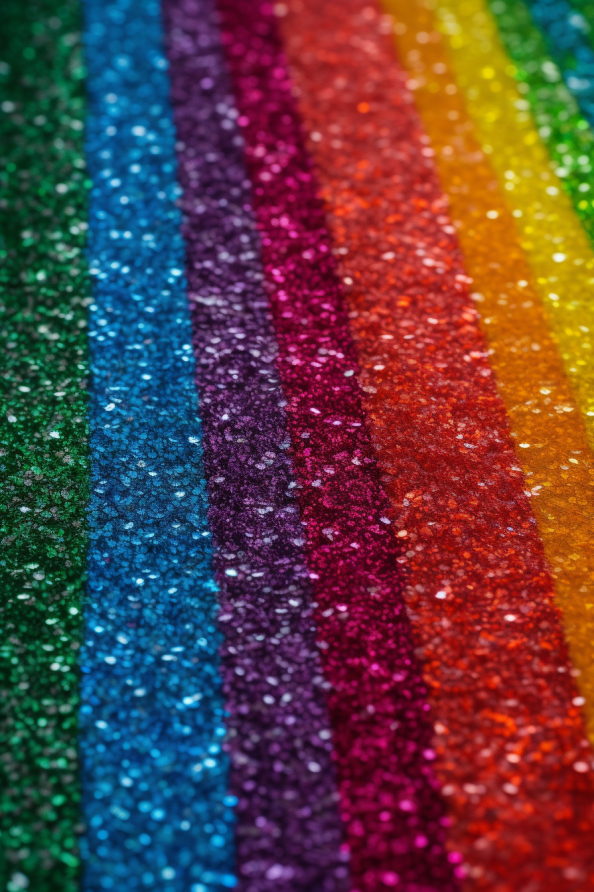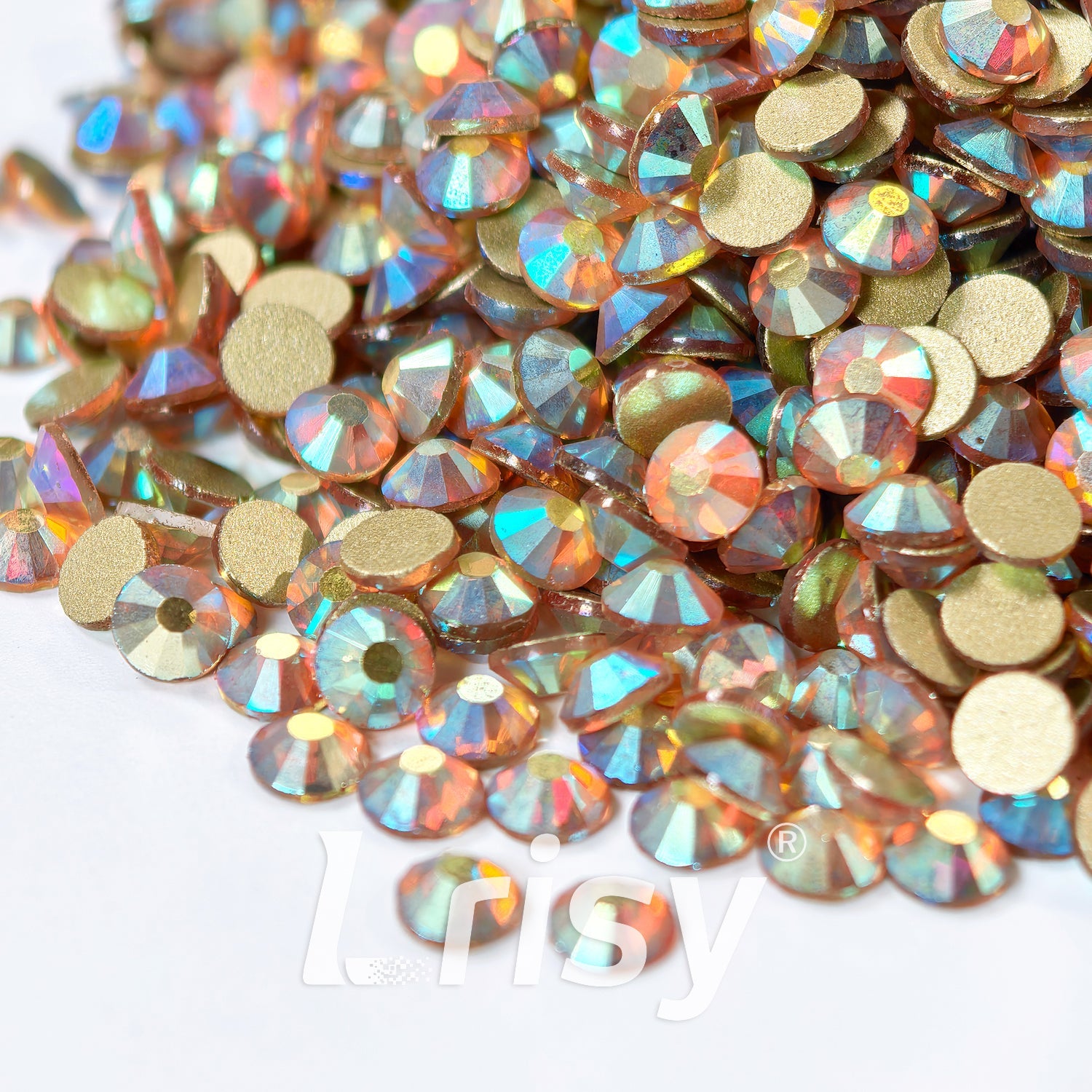Rhinestones: the very word conjures images of glitter, glamour, and elegance. Often seen adorning everything from high fashion to everyday accessories, rhinestones have carved a niche for themselves in the world of adornment. But what exactly is a rhinestone, and how did these sparkling stones become a symbol of sophistication and style? In this article, we explore the nature of rhinestones, their origins, and their importance in today's world.
What is Rhinestone?
At its core, a rhinestone is a simulated diamond, typically made from crystal, glass, or acrylic. Originally, rhinestones were rock crystals gathered from the river Rhine, hence the name. Today, they are manufactured gems designed to mimic the brilliance of real diamonds at a fraction of the cost.
- Crystal: Crystal rhinestones are made from leaded glass. The addition of lead increases the refractive index of the glass, making it more reflective and enabling it to mimic the sparkling effect of a diamond more closely. The precise amount of lead can vary, but higher lead content generally results in better sparkle due to increased refraction of light.
- Glass: Glass rhinestones are imitation gemstones made from high-quality glass. They are crafted to mimic the appearance of diamonds and other precious stones by reflecting light in a way that maximizes sparkle and shine.
- Acrylic: Acrylic rhinestones are a popular type of imitation gemstones made from acrylic resin, a type of plastic that offers a cost-effective alternative to glass or crystal rhinestones. Due to their plastic composition, these rhinestones are lightweight, versatile, and available in a wide range of colors and shapes, making them an ideal choice for various decorative purposes.
The History of Rhinestones
The journey of rhinestones from riverbeds to the heights of fashion is a fascinating tale. It began in the 18th century when jewelers started cutting glass with metal powder to create an affordable alternative to diamonds. The invention of lead glass by George Frederic Strass in the 1730s significantly enhanced the sparkle of these stones, earning him the title "the father of rhinestones."
The Manufacturing Process
Creating rhinestones involves intricate processes of cutting, coating, and polishing to produce stones that closely resemble real diamonds. The precision and quality of these processes determine the rhinestone's final brilliance and clarity.
- Material Selection Appropriate raw materials are selected based on the desired product characteristics such as transparency, color, and hardness. Glass and crystal are commonly used materials for manufacturing high-quality rhinestones, while plastics (such as acrylic) are used for producing cost-effective alternatives.
-
Cutting and Shaping The raw materials are cut into small pieces or crushed into powder, then formed into the desired shapes through molds. This step is crucial for ensuring the multifaceted effect of rhinestones, which mimic the brilliance and refraction of natural gemstones.
-
Polishing After shaping, rhinestones undergo a polishing process to enhance their luster. This step can be done manually or with automated machinery, aiming to smooth the surface of the rhinestones and enhance their reflective properties.
-
Coating To enhance the reflective effect and saturation of color, the base of the rhinestones is often coated with a metal layer, with silver being the most common. This coating not only adds luster but also helps the rhinestones better refract light.
-
Coloring Rhinestones can be colored during the manufacturing process or through a coating applied to the finished product. The coloring process offers a wide range of options, from transparent to various colors, including special effects like laser cutting or rainbow shades.
-
Inspection and Packaging The finished rhinestones undergo quality inspection to ensure their size, shape, and luster meet standards. Qualified products are then packaged and prepared for sale.
The entire manufacturing process requires precise technology and strict quality control to ensure the final product meets the expected standards of beauty and durability.
Sizing Guide for Rhinestones
When using or purchasing rhinestones, understanding how different sizes of rhinestones fit various designs and purposes is crucial. The size of rhinestones is typically measured in millimeters (mm), with the range spanning from very small, a few millimeters, to much larger, several tens of millimeters.
SS (Stone Size): This is a common size standard used to describe the size of a rhinestone. The larger the SS number, the larger the rhinestone. For example, SS6 is approximately 2mm, SS10 is 2.8mm, and SS20 is 4.8mm.
The use of rhinestones in fashion and decoration
Rhinestones have made their mark far beyond jewelry; they are now staples in the fashion industry, used to embellish clothing, shoes, and accessories. Beyond fashion, rhinestones decorate everything from home decor to artwork, adding a touch of luxury wherever they are applied.
-
Fashion: A Sparkle of Creativity
In the realm of fashion, rhinestones have carved a niche for themselves as quintessential elements for adding dazzle to any attire. From elevating the allure of high-end evening gowns to introducing a glittering touch to everyday nail art, rhinestones have seamlessly integrated into the fabric of fashion design. Designers leverage these shimmering gems to transform ordinary pieces into runway-worthy creations and eye-catching retail merchandise.
-
Home Décor: Luxurious Embellishments
Rhinestones transcend the boundaries of fashion to add a luxurious flair to home interiors. Utilized as decorative accents, they enhance home furnishings, including pillow covers and curtain tie-backs, with their luxurious sparkle. In settings that command opulence, rhinestones embellish chandeliers and wall art, casting reflective light that imbues spaces with a regal magnificence.
-
Crafts and DIY: The Jewel in the Crown
For craft enthusiasts, rhinestones are a treasure, rhinestones are invaluable assets. These versatile gems find their way into an array of handmade creations, from bespoke jewelry and personalized greeting cards to epoxy resin. The simplicity of their application, coupled with the immediate enhancement they bring, positions rhinestones as the go-to choice for DIY projects large and small, infusing them with a touch of glamour.
Where to buy rhinestones?
- Online Stores: Online platforms, such as Lrisy offers an extensive selection of rhinestones at highly competitive prices, available for bulk purchase with attractive wholesale discounts. With a diverse range of colors, sizes, and types at your disposal, whether you're custom-designing dresses, glassware, stage costumes, or looking to add sparkle and allure to a variety of products, or even engaging in handcrafted DIY projects, Lrisy is your go-to source for all your rhinestone needs. Shopping online brings the ease of exploring various options, diving into reviews for insights, and frequently finding superior deals. Nonetheless, it's crucial to make purchases from trusted sellers to guarantee the quality of your acquisitions.
- Physical Stores: Brick-and-mortar locations, including craft shops, accessory outlets, and unique boutiques, typically offer a range of rhinestones. In-person shopping grants customers the opportunity to directly evaluate the rhinestones' quality, size, and hue, facilitating the selection of items that perfectly match their needs.
How to Identify Quality Rhinestones?
Observing Cut Quality: High-quality rhinestones possess precise and uniform cuts, affecting not only their level of sparkle but also their ability to reflect light. Rhinestones with clear, symmetrical cut edges usually indicate a higher quality.
Checking Clarity and Transparency: Rhinestones with higher clarity have fewer defects and appear more transparent and flawless. Stones with visible bubbles, cracks, or other internal imperfections should be avoided.
Evaluating Luster and Reflection: High-quality rhinestones should beautifully reflect light, showcasing distinct brilliance. Stones with good luster typically signify better quality.
Comparing Color Consistency: Within the same batch of rhinestones, the color should be consistent. Stones with uneven coloration or significant color differences may be of lower quality.
Feeling the Weight: While not the most accurate method, heavier rhinestones (such as those made of glass or crystal) generally have better quality than lighter plastic ones.
FAQs About Rhinestones
How do I differentiate between glass, acrylic, and crystal rhinestones?
Glass rhinestones have a weighty feel and offer a balance between brilliance and affordability. Acrylic rhinestones are lightweight and less brilliant than glass or crystal. Crystal rhinestones are the most brilliant, made from leaded glass.
Can rhinestones get wet?
Yes, rhinestones can get wet, but how they respond to water largely depends on the material they are made from and the method used to adhere them to a surface. Glass or crystal rhinestones may not be affected by water, but prolonged exposure can potentially damage the foil backing that enhances their sparkle. For acrylic rhinestones, water is less likely to cause immediate damage, but they can still be susceptible to wear over time if frequently exposed to water.



Leave a comment
All comments are moderated before being published.
This site is protected by hCaptcha and the hCaptcha Privacy Policy and Terms of Service apply.